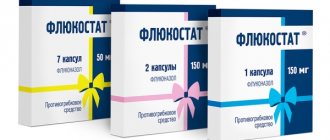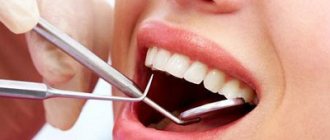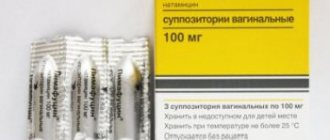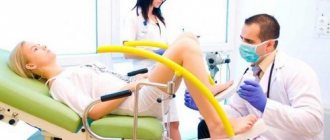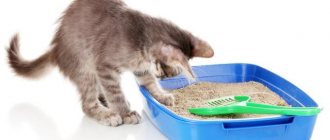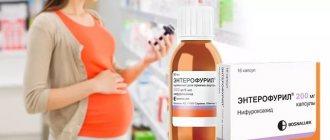What products can you use to wash your face to relieve the symptoms of thrush?
The rules cover not only the procedure itself, but also the actions immediately after it.
If you adhere to them, then washing will help get rid of a delicate problem and eliminate the risks of spreading the disease in the body, as well as contracting other diseases. How to wash during thrush:
- First, you need to thoroughly wash your hands under running water using antibacterial agents. This will eliminate the risk of pathogenic organisms getting from your hands onto the mucous membranes of the genital organs;
- You need to wash yourself at least twice every 24 hours: before and after sleep. If there is a large accumulation of white plaque, you can wash more often;
- The correct movement when washing is from the pubis to the coccyx. This eliminates the risk of bacteria from the intestines entering the vagina;
- For wiping, you need to use a fresh, separate towel, which, after drying, must be heated with a hot iron;
- Washing can be done before or after a shower, but not a bath. It is not advisable to wash in the bathroom during thrush.
These rules will make it possible to provoke infection with other diseases when washing, as well as prevent the spread of thrush to other parts of the body (it can affect the skin, mucous membranes of the mouth and nose).
Important! During treatment you should use white, soft toilet paper. Colored and rough cannot be used. They increase irritation.
How to choose a cleanser for thrush in women:
- Pharmacy products should not contain fragrances, dyes and flavors, as they can cause increased irritation and swelling;
- Gel for intimate hygiene must contain lactic acid. This substance regulates the composition of microflora;
- Do not use regular or antibacterial soap for washing. Soap compositions dry out the skin and disrupt the balance of microflora.
Important! If you have thrush, you should not use tampons during your period. The gasket must be changed every 3 hours.
To alleviate the condition, you can use home remedies that destroy the fungal infection, relieve pain and swelling. Most home remedies for washing are recommended by gynecologists, but a visit to the doctor should not be delayed. Most of these remedies are also suitable for pregnant women, but topical preparations can be used with the permission of a doctor.
- Soda. An alkaline environment destroys fungal infections that require an acidic environment. To prepare the solution, you need to dissolve a tablespoon of soda in a liter of clean, boiled water. You cannot use a soda solution more than twice a day, since an alkaline environment can cause bacterial vaginosis. Douching with soda solution can be done once a day.
Important! Using a soda solution during pregnancy is highly undesirable; it is better to use milder products!
- Phytotherapy. To wash, you can use natural products that you can buy at the pharmacy:
- nettle;
- chamomile;
- celandine;
- eucalyptus;
- burdock root;
- oak bark;
- sage;
- lavender;
- series;
- mint;
- carnation.
These components allow you to prepare a decoction that relieves swelling and inflammation, destroying fungal infections. Decoctions can be prepared from a mixture of herbs or from one medicinal component. To prepare the decoction, take 5 tablespoons of the plant base per 170 ml of water and hold on fire for 5 minutes. Or let the mixture sit for two hours. The finished product is diluted to 200 ml of decoction and used warm for washing.
Note! Most often, a gynecologist for thrush during pregnancy prescribes the use of herbal decoctions for washing. But they must be used carefully, as herbs can cause allergies.
- Boric acid. To prepare a boron solution for washing, you need to take a teaspoon of the product and dilute it in 200 ml of hot water. You can use the product after it has cooled to a comfortable temperature.
- Potassium permanganate. A solution of potassium permanganate should be used extremely carefully, as it can cause burns to the mucous membranes of the genital organs and disruption of the vaginal microflora. A slightly pink solution is suitable for washing.
Important! Solutions based on boric acid, soda or potassium permanganate can be used for no more than 5 days.
- Essential oils. To wash and eliminate unpleasant odors, you can use solutions of essential oils:
- orange;
- eucalyptus;
- mint;
- pine;
- mandarin;
- cedar;
- lavender.
To prepare a solution for washing, you need to dissolve 3 drops of essential oil in a liter of warm water.
Important! Some sources recommend using honey water for washing. But this should not be done, since honey water not only does not bring a therapeutic effect, but creates a comfortable environment for the proliferation of pathogenic bacteria and fungi!
For healing, it is important that the woman not only wash herself well, but also maintain proper nutrition, get rest, and give up alcohol.
- Rinse off the remaining solution, decoction or rinsing gel with clean running water;
- Wipe your genitals dry with a clean towel;
- If possible, take an air bath without wearing underwear for at least 5-10 minutes;
- Wear loose cotton underwear, ironed on both sides;
- Do not wear a panty liner - it creates ideal conditions for the development of candidiasis.
After washing, it is necessary to follow the rules of hygiene, which will speed up recovery and help avoid the spread of infection. Washing allows you to get rid of the unpleasant symptoms of thrush. However, a visit to a gynecologist if there are signs of thrush is necessary - insufficient treatment can provoke a chronic form of candidiasis or infection of internal organs.
19 February 2020 7:23 13334
Treatment of thrush during pregnancy is often not the treatment of the disease, since there is a risk of harming the development of the fetus, but the removal of the external symptoms of this fungal disease. However, even with this option, an integrated approach is usually chosen, which includes changes in the usual lifestyle, changes in diet and influencing the problem with the help of special means.
A fairly effective and often necessary method of combating symptoms of thrush is regular washing with the use of medicinal solutions and mixtures. Thanks to this approach, it is possible to suppress the pronounced manifestations of pathology at home quite quickly. But in order not to worsen the mother’s well-being and not to harm the unborn child, you need to know exactly what is acceptable to use as the main means during pregnancy, which can be used to wash yourself and which, after some time, will bring the necessary result.
Washing, as a way to relieve the unpleasant and exhausting external manifestations of candidiasis, will be effective only if a similar home procedure is performed several times a day. During pregnancy, when fungal disease is often very pronounced, you can perform this effect on the pathology after each visit to the toilet. However, it is considered optimal to wash your face up to 5 times a day and be sure to do this procedure in the morning and before going to bed.
We invite you to familiarize yourself with Vaginal Anti-Itching Cream: name, top best products, composition, instructions for use
Chamomile is very popular for treating thrush
In an effort to fight back thrush, you need to carefully select the means that will be most effective. During pregnancy, you are allowed to use herbal decoctions and various herbs, but you must act very carefully. Some flowers and herbs can cause an allergic reaction, so the solutions themselves should not be too concentrated.
When choosing treatment with herbs, you can turn to special gynecological preparations, consulting your personal doctor or pharmacist at the pharmacy before purchasing. But you can also combine flowers and herbs yourself, based on your individual characteristics and preferences. Using infusions or decoctions in a pure, unmixed form can also give favorable results.
- chamomile;
- calendula;
- lavender;
- eucalyptus;
- Oak bark;
- nettle;
- Birch buds;
Infusions and decoctions of calendula are also used for washing
In addition to such natural remedies, you can use honey to wash away thrush, if you do not have an allergic reaction to it, and regular baking soda. Soda solution is absolutely safe during pregnancy, and it quickly relieves the discomfort caused by candidiasis.
Among the auxiliary medications, you can choose to wash with a non-concentrated solution of potassium permanganate or use furatsilin.
Important: it is recommended to perform home procedures during pregnancy regularly, but not longer than 7-10 days in a row. Otherwise, washing with decoctions and solutions can provoke allergies, excessive dryness of the mucous membranes, cause discomfort, or simply cease to be effective during thrush.
Before you start washing, you need to consider the following important points:
- This action should be performed after all the usual hygienic procedures, and for them you can use baby, laundry or tar soap;
- it is better to refuse special shower gels and intimate area care gels, especially those that are strongly scented;
Try to avoid shower gels during treatment
If the symptoms of candidiasis are very pronounced, strong cheesy discharge predominates, you can wash yourself once every 2-4 hours. To avoid excessive dryness, you can use special antifungal creams or vaginal suppositories. However, choosing them yourself, especially during pregnancy, is not recommended. Such drugs must be prescribed by a doctor.
When deciding to combine herbs yourself, you can choose one of the following composition options:
- nettle, birch buds and sea buckthorn;
- chamomile and calendula;
- oak bark, nettle, string and lavender;
Dry and fresh herbs, inflorescences, as well as preparations in the form of ready-made tinctures, for example, calendula tincture, are suitable for making infusions and decoctions. The proportions should be approximately the same.
- Honey water. For a liter of warm water you need to add a couple of small spoons of natural honey. Stir well until the sweet substance is completely dissolved. And use it for its intended purpose without waiting for the solution to completely cool down.
- A decoction of pure chamomile. Both filter bags are suitable for use (you will need two per liter of liquid), as well as grass and loose inflorescences (1-2 tablespoons also per liter container). The broth must be left for half an hour, then strain well if necessary.
- Calendula with chamomile. You will need two spoons of chamomile and one spoon of calendula. The mixture is poured with boiling water. Then it is infused under the lid for 24 hours. The infusion must be strained and a little warm water added.
- Burdock decoction. You need to take about 5-6 tablespoons of the crushed product per liter container, add water and bring to a boil over high heat on the stove. As soon as the solution boils, reduce the heat and cover with a lid, keep it that way for another 8-12 minutes.
Beneficial features
Chamomile has a wide spectrum of action and has a beneficial effect on women's health. Most often, washing with chamomile is prescribed for acute inflammatory processes, unwanted discharge and other intimate problems.
The pharmaceutical product has the following effect:
- antiseptic;
- anti-inflammatory drug;
- helps eliminate spasms and pain;
- ensures normal Ph in the intimate area;
- normalizes vaginal microflora.
Chamomile is widely used for severe itching in the intimate area. It gently soothes and relieves discomfort.
Medicinal chamomile has an interesting biological name - Matricaria, which translated from Latin means “uterine herb”. Indeed, the plant was once used mainly to treat women's ailments. But this does not give any reason to claim that chamomile is good for pregnant women, as is often mistakenly written on women’s forums and numerous women’s websites. Chamomile during pregnancy is a risk factor, and therefore the official instructions for the use of herbal raw materials prohibit expectant mothers from taking chamomile internally.
But in some cases, chamomile is still indicated. For pregnant women, the scope of its applied use is limited to local use and rinsing. Sometimes, with the permission of a doctor, it is permissible to add chamomile flowers to tea, but the amount of such a drink is strictly regulated and dosed. Uncontrolled use of chamomile during pregnancy and breastfeeding is strictly prohibited. The strong medicinal effect of this plant is due to the presence of bioflavonoids, coumarins, and organic acids, for example, salicylic and caprylic.
Among the vitamins there are nicotinic acid and vitamin C. There are tannins and even gum. Chamomile oil consists of the essential component of dry baskets.
Chamomile has an anti-inflammatory effect, it disinfects well, and has a moderate analgesic effect. Chamomile is used as a choleretic agent. Its composition causes a sedative, mild calming effect on the nervous system. It relieves cramps, helps reduce intestinal colic, improves appetite and improves the functioning of the gastrointestinal tract. Chamomile, according to modern scientists, is an excellent antidepressant.
During pregnancy, chamomile can be used for washing and washing; it is an excellent remedy for healing the skin. As prescribed by a doctor, the plant can be used for colds - its decoction can be used to gargle, and for stomatitis in the oral cavity. Chamomile helps to quickly relieve the inflammatory process, heal wounds and erosions. If you have a runny nose, it is permissible to rinse your nose with a decoction of chamomile, and if you have a strong cough and there are no other contraindications, the expectant mother may be allowed up to 2 cups of lightly brewed tea.
Pregnant women are allowed to do baths with chamomile and douching for infectious and inflammatory diseases of the genitourinary area.
Gels for intimate hygiene
For thrush, gels containing lactic acid can eliminate swelling, itching, pain, and redness. These remedies normalize the number of lactobacilli in the vagina, accelerating the healing process.
- Epigen Intim. This product contains glycyrrhizic acid, which suppresses pathogenic microorganisms. The gel is used only on the recommendation of a doctor; its purpose is to treat inflammatory processes.
Important! Long-term use of Epigen Intim can cause skin irritation or an allergic reaction! It cannot be used for prophylaxis.
- Gel for intimate hygiene with bisabolol, lactic acid, chamomile extract. It stops inflammatory processes, soothes the skin and normalizes pH levels. Suitable for daily use.
- The product is in the form of an intimate gel, which contains lactoprebiotics that maintain a healthy balance of microflora. The hypoallergenic product can be used during pregnancy.
- Gynocomfort. The product contains chamomile extract, tea tree oil and lactic acid. The gel gently cleanses inflamed tissues and relieves swelling, soothes irritated skin.
The best products for intimate hygiene are those that do not contain SLS and similar aggressive detergents.
This area of the body is not talked about out loud, but it is the one that is taken care of the most.
The vagina of a healthy woman, in everyday life, has an acidic flora (pH 3.5-4.5).
In such an environment, harmful bacteria are not able to multiply. When pregnancy occurs, hormone levels fluctuate, changing the condition of the vaginal mucosa and flora. Discharge appears.
If before pregnancy a woman had inflammatory processes caused by yeast-like fungi, coccal bacteria, they will lead to vaginosis, dysbacteriosis, and candida.
To eliminate these unpleasant moments, an individual approach is required.
How can you wash yourself with thrush during pregnancy?
As for external use, there are practically no contraindications. It is allowed to use soap, baking soda, decoctions of medicinal herbs, and potassium permanganate during pregnancy.
Douching with a rubber bulb is contraindicated in the first months of pregnancy if there is a threat of miscarriage; in the last trimester, since the cervix is slightly open, the risk of infection increases. These contraindications do not apply to washing. You can choose any means. But it is recommended to consult with a specialist first.
That is why preference is given to local remedies that directly affect the source of the infectious process, but are absolutely harmless to the unborn child.
This popular remedy can be bought at almost any pharmacy, but you should understand that its use is allowed in the second and third trimesters of pregnancy. The active substance of this drug is ketoconazole, which acts directly on the affected mucous membrane and does not harm the development of pregnancy. The course of treatment usually lasts from three to five days. Detailed instructions here.
Treatment of thrush, especially during pregnancy, should be carried out strictly according to the doctor’s recommendations. The fact is that different drugs can be used in each trimester, so you should not experiment and select them yourself.
We suggest you read: Is it possible to take a shower if you have chickenpox?
Miconazole is a drug for both local and systemic treatment of fungal infections. During pregnancy, the product is used in the form of vaginal suppositories. The active component of the drug has antimycotic and antibacterial properties.
Antifungal agents are prescribed only when absolutely necessary with a doctor’s prescription, but if they can be avoided, then they are not used. Of course, many modern antimycotic drugs have such a composition that they cause minimal harm to the health of the mother and the development of the fetus, but still you should not self-medicate. The choice of drug, dosage, duration of treatment - all this is determined by the doctor himself.
Among the most popular drugs that effectively fight fungal infections is Pimafucin. The drug has no significant side effects, so it can be used at any period of pregnancy, in particular in the first trimester.
Long-term studies of the use of the drug indicate high safety and good effectiveness. You can find complete instructions for use on our website.
This drug is prescribed by doctors even from the first weeks of pregnancy. Typically the duration of treatment is about a week. The only restrictions on the use of betadine are serious disorders of the thyroid gland and hypersensitivity to iodine.
This drug is not prescribed during the second and third trimester of pregnancy, because during these periods it becomes dangerous to the fetus. The active components of the drug are able to penetrate the protective barrier and cause disorders of the thyroid gland.
Natamycin is the main active component of the drug, which practically does not enter the circulatory system from the digestive tract, is not absorbed from the mucous membranes and penetrates through the protective barrier to the fetus. Therefore, the conclusion is obvious: Pimafucin cannot harm the child.
Treatment of candidiasis with this drug can be carried out from the conception of a child until childbirth, there are no restrictions. As for the duration of treatment, it is difficult to say that everything depends on the severity of the fungal infection and the body’s defenses; for some, only three days of treatment are enough, for others at least nine days.
As a rule, pregnant women are prescribed the remedy in suppositories, which are administered every evening, one suppository. In the first days of using suppositories, a slight burning sensation may appear, which should not be alarmed; it should go away on its own.
In more severe cases, the tablet dosage form is preferable - one tablet four times a day for a week.
Clotrimazole
The main active component acts on the protective membrane of fungal cells, as a result of which its permeability decreases and the cell dissolves. In small dosages, clotrimazole slows down and stops the growth of yeast-like fungi, and in large doses it leads to their death. Full instructions for clotrimazole can be found here.
During clinical studies, no harm to the development of the fetus was identified, but still the decision on the advisability of clotrimazole is made by the doctor himself. As a rule, treatment is carried out for seven days, each day one tablet without the use of an applicator is inserted deep into the vagina before bedtime.
Itching and burning may occur, if such sensations do not go away within several days, then the drug is changed, since there is a high probability of developing allergic reactions.
This French drug that effectively fights fungal infections during pregnancy. The course of treatment lasts from one to two weeks. Before inserting the vaginal tablet, it must be immersed in warm water for half a minute.
If you administer the drug during the day, then after the procedure you should lie down for twenty minutes. Detailed instructions for the drug are here.
When dealing with thrush, you must follow these rules:
- before washing, you need to wash your hands;
- use soap only for washing the skin around the genitals, as it dries out the vaginal mucosa;
- in case of thrush, it is necessary to completely avoid the use of antibacterial soap;
- any cosmetic product used for this disease must include citric acid;
- The use of scented skin care products is unacceptable, as they cause allergies;
- You should give preference to regular baby soap;
- It is necessary to use individual towels;
- you need to wash from front to back - this method prevents infection of the vagina by bacteria contained in the intestines;
- If you have thrush, it is unacceptable to use aromatic sanitary pads, which can cause skin irritation and an allergic reaction;
- It is necessary to give preference to soft toilet paper - it eliminates the possibility of microtrauma to the vaginal area.
Remember that if you have thrush and to prevent it, you do not need to wear underwear made of synthetic fabrics. It is necessary to change linen daily, as well as towels for the intimate area.
Oak bark and nettle
Two more plants that are helpers for women. Chamomile is more of a preventative remedy, while oak bark can, in some cases, perform a full-fledged treatment. First of all, its infusion allows you to thicken the mucous membrane, which becomes loose during the life of the fungus. In addition, oak bark reduces swelling and sensitivity.
You will need to buy herbal raw materials at the pharmacy. Oak bark paired with nettle helps very well, so it’s worth buying that too. Two tablespoons of bark are poured into a liter of boiling water and boiled for 10 minutes. After this, add 2-3 tablespoons of nettle leaf to the broth. Leave to sit for 20 minutes. After this, the broth is filtered and used to irrigate the genitals. When using this remedy, the symptoms of thrush disappear very quickly.
How to properly wash yourself with candidiasis?
- You can use ordinary tap water if it looks clean in appearance, without rust or dirt. Otherwise, it is better to use boiled or bottled water. If you plan to douche, then take only boiled water for these procedures.
- The water for washing should not cause discomfort and be warm. Using cool water can cause inflammation. If for some reason you use water from a river or well, you must first boil it and cool it to the desired temperature, and only then use it.
If for some reason you cannot wash yourself using water, wet sanitary napkins will come to your aid. Don’t skimp on their quality, buy special ones for intimate hygiene. The use of napkins is a temporary measure that does not replace thorough washing with water in case of thrush.
- The number of daily washing procedures is from 2 to 8. Carry out hygiene procedures at any opportunity. It should be remembered that washing cannot replace medicinal procedures prescribed by a doctor; it is a necessary addition to them.
- It is necessary to irrigate the intimate organs with water strictly from front to back. Get yourself a separate clean and soft towel. Do not allow other family members, especially children, to use it. Avoid rough movements while wiping. The intimate area during illness is highly sensitive, so you should gently blot it, without rubbing or pressing.
- Only the external genitalia need to be washed. If necessary, you can douche using boiled water and special herbal decoctions or solutions.
We suggest you read: How to treat thrush during early pregnancy
If you have thrush, you should wear underwear made from natural materials that allow air to pass through well, and change it regularly - up to 3-4 times a day. During treatment, avoid tight-fitting thong panties. If you decide to use panty liners, try to change them as often as possible, ideally every 1 - 1.5 hours.
Thrush is a common companion of pregnant women. This disease occurs due to hormonal changes in the body and decreased immunity. Treatment of thrush in pregnant women should be carried out exclusively on the recommendation of a gynecologist. At the first unpleasant symptoms, contact a antenatal clinic; self-treatment can harm the baby’s health!
Pregnant women need to wash themselves as often as possible, ideally after each visit to the toilet, after waking up and before going to bed. Self-prepared solutions should not be overly concentrated so as not to cause an allergic reaction.
Be wary of using sage infusion as it may adversely affect the health of the fetus and the woman. Solutions for washing can be used based on soda, furatsilin, decoction of medicinal herbs: chamomile, nettle, oak bark, calendula, nettle.
During menstruation, the cervix of the uterus opens slightly, so women are strictly prohibited from douching on such days, so as not to introduce an infection into the body. You can wash yourself with intimate gels or soda solution. Treating thrush during menstruation is difficult, but there are special remedies that your doctor will prescribe for you. Even if you are menstruating, consult your doctor for advice.
- Before the procedure, you need to wash your hands with soap to avoid introducing even more pathogens.
- Soak your index finger in the solution, insert it deep into the vagina, and remove plaque. Until there is no white cheesy discharge left.
- After the procedure, you need to dry the genitals with a clean towel or napkin.
- Wash your hands thoroughly again.
It is convenient to wash over a toilet or basin. You can choose any option that suits you. There are no special rules for carrying out the procedure.
https://www.youtube.com/watch?v=vqSHv-Q22bc
Treatment of candidiasis is carried out comprehensively. It is necessary not only to eliminate painful symptoms, but also to eliminate the effect of negative factors and direct all efforts to strengthen the immune system. Only in this case will the body independently restrain the growth of fungi and prevent relapses. It’s not worth it to be overzealous with medicinal compositions for washing for the purpose of prevention. It is better to do this with ordinary clean water.
Adviсe
It is better for pregnant women to buy chamomile at the pharmacy. Pharmacists offer only pure, quality- and safety-tested raw materials. If you collect the plant yourself, you may end up with flowers and stems that are not at all useful. If chamomile grew near roads, in an area of radiation or chemical contamination, then there will be no benefit even from topical application. But there can be a lot of harm.
If you have the skills of an herbalist, then you must collect chamomile in dry and sunny weather, from June to the first third of August. If we are talking about external use approved for expectant mothers, you should not limit yourself to flowers alone; all plant materials in their entirety are suitable - with stems and leaves. Dry the collected chamomile with the inflorescences down in the shade, without the penetration of sunlight. The room should be well ventilated. The attics of village houses and cottages are ideal for this purpose.
If there is no such house, you can try to prepare chamomile using a dryer, but the temperature should not exceed 40 degrees. The plant should be turned over in the dryer very carefully and carefully so that the petals and leaves do not fall off. Chamomile should be stored in paper or fabric bags in a dry, fairly dark place. Shelf life: 1 year.
If you bought a ready-made collection, pour it into either a paper bag or a fabric bag and store it away from food - they can quickly absorb the strong smell of the medicinal plant. Chamomile can be purchased in the form of tea, collection, or flowers. Pharmacies also sell ready-made liquid tinctures. When choosing this form, remember that pregnant women should not use alcohol tinctures in any form.
Pharmacies have chamomile extract and chamomile oil. Capsules for oral administration are contraindicated for expectant mothers in all cases. The first use of a pregnant woman should always be carried out with great caution, in dosages half the recommended ones. If there are no negative reactions, you should gradually reach the recommended doses.
Is it possible to wash yourself with soap?
Toilet soap cannot be used for thrush. The product contains fragrances, dyes, flavors, and other chemicals that irritate the vaginal mucosa and often cause candidiasis.
As for natural soap, it can be used, even necessary. Soap, like baking soda, forms an alkaline environment and reduces acidity. Has an antibacterial effect. It is allowed to use high-quality baby soap, laundry soap, and even better, tar soap. The latter drug not only changes the environment in the vagina, but promotes rapid restoration of the mucous membrane.
But do not forget that soap dries out, and with prolonged use it can also cause irritation, discomfort and the same thrush. It is necessary to use the product until the painful symptoms disappear completely, but not more than 14 days.
Directly soaping the genitals is not recommended. The product is added to the water, then washed over the toilet or sink. After the procedure, use a remedy prescribed by a specialist. Or they leave everything as is. The procedure must be done in the morning, before going to bed.
There is a well-established popular opinion that the use of laundry soap is especially effective in fighting thrush and is good for itching. Laundry soap has antiseptic properties and creates an alkaline environment that prevents the growth of fungi that cause thrush. Laundry soap is also suitable for preventing thrush.
The use of tar soap, which has a natural composition and also has an antiseptic effect, also receives good reviews. However, you should always be aware of possible individual allergic reactions. Even if this method helped your friends, this does not mean that it will help you too.
Regular toilet or baby soap is not recommended as a means for washing with thrush, since it has the property of changing the acid-base balance of the genitals. By washing with soap, you can change the environment from acidic to neutral or slightly alkaline, which causes disruption of the vaginal microflora.
Washing with soda
One of the companions of candidiasis is a sour, unpleasant odor, because under the influence of a fungal infection, the environment in the vagina becomes acidic. Soda will help “extinguish” it. Sodium bicarbonate (Natrii hydrocarbonas), or baking soda, is a natural antiseptic and acidity neutralizer, an indispensable remedy for the treatment of thrush.
Once in the vagina, it absorbs the acidic environment and makes it alkaline. Candida albicans dies, the acid-base balance is restored, relief is felt after the first use (itching decreases). Regular use will relieve the disease.
The recipe is simple to prepare. Taken:
- 1 liter of water, cooled to 37 degrees;
- 1-2 tbsp. l. soda;
- 1 tsp. potassium iodide.
The ingredients are mixed. Irrigate (wash) the genitals and perineum with the mixture several times a day. For better results, you can use sitz baths: sit in a soda solution for 15 minutes. It is recommended to repeat 4-6 times a day to see results.
Doctors recommend douching with soda. To do this, you need to dissolve 1 teaspoon of soda in a liter of warm boiled water. Pour the product into a syringe (Esmarch mug) and irrigate the vagina. The procedure can be carried out while lying in the bathtub or sitting on the toilet. After washing, you need to lie down for 15-20 minutes.
Soda solution relieves itching and swelling, iodine acts as an antiseptic. The mixture acts locally and is not absorbed into the blood and has no side effects.
If you have thrush, you should wash yourself with soda, following the recommendations:
- Do not overuse frequent washing. A large amount contributes to dryness of the genitals, causing allergies.
- Do not use baking soda solution during pregnancy. The presence of cervical erosion is a contraindication for soda procedures.
- Do not wash yourself with baking soda before visiting a doctor. Soda will “wash away” traces of the disease. The doctor will not be able to identify the cause of the disease.
- Do not combine soda treatment with smoking, drinking alcohol, strong tea, or coffee.
- Do not forget that washing is an independent treatment that can be dangerous with complications.
Proper use of soda solution will lead to recovery! But it is better to first consult with your doctor. And then you are guaranteed 100% success in the fight against thrush.
Do douching only after consulting a doctor and being confident that the procedure is performed correctly. Remember to boil the plastic tip before use.
How does the disease manifest itself and what does it mean?
Thrush is an infectious fungal disease. The causative agent is the Candida fungus. These fungi are usually inactive. They live on the skin and in the internal organs of humans. But during pregnancy, when the expectant mother’s immunity is weakened, they can enter the active phase. Thus, candidiasis, or thrush, occurs.
Genital thrush is a common disease in pregnant women. She can also “pick it up” from her sexual partner during sex. With genital thrush, white or cream-colored mucous discharge begins from the vagina. They have a strong unpleasant odor. The woman feels unbearable itching and burning in the labia and vagina. The external genitalia become red and swollen.
The presence of candidiasis is indicated by increased sensitivity of the genital organs of a pregnant woman, pain during sexual intercourse.
Thrush during pregnancy is a serious problem. It not only causes discomfort to the pregnant woman herself. With thrush, the fetus itself can become infected through the placenta, or infection occurs during the birth of the child. Candidiasis often causes pregnancy complications.
Thrush is treated locally under the supervision of a doctor. Pastes, creams, suppositories, and tablets that relieve the disease are systematically introduced into the vagina according to a developed scheme.
Using household alkali
For the development and normal functioning of the fungus, an acidic environment is needed, which is normal and maintained in the vagina, since beneficial lacto- and bifidobacteria live in it. Gynecologists confirm that you can wash yourself with soda when you have thrush to stop the development of the disease and relieve itching. That is, this remedy helps well even in advanced cases. However, it must be borne in mind that this remedy cannot be used regularly, as it can disrupt the natural balance of the vaginal environment.
Preparing the solution is not difficult at all. To do this, you will need a full tablespoon of baking soda and a liter of boiled water. The water needs to be cooled to a comfortable temperature, approximately 37 degrees. If you have thrush, you can wash yourself with baking soda several times a day, for example in the morning and evening.
Hygiene procedures
Many doctors advocate that during treatment of the disease, the pregnant woman should wash herself more often with a soda solution. To prepare it, you just need to dissolve a tablespoon of baking soda in a liter of warm boiled water. In some cases, at the very beginning of the onset of candidiasis, it is thus possible to recover from the unpleasant disease.
Constant washing helps relieve swelling and redness of the external genital organs of a pregnant woman. Eliminates itching and burning. During the treatment period, it is necessary to constantly change bed and underwear, and shower more often. You should also avoid sexual relations with your sexual partner.
Decoction of medicinal plants
Traditional medicine recommends safe natural remedies for the treatment of candidiasis. The list of herbs and infusions used for thrush is huge. The most effective include chamomile, string, oak bark, burdock root, and marigold. Is it possible to wash off thrush with herbs and herbal infusions? Yes, yes and yes! And even in combination with each other.
Decoction of chamomile, oak bark and nettle
To prepare a chamomile solution, you will need 1 teaspoon each of dried chamomile flowers and oak bark; 20 grams of nettle leaves. Add the vegetable mixture to a liter of boiling water and cook for 15 minutes over low heat. Wrap the finished mixture and leave for 2 hours. Use the cooled and strained broth to wash or douche at least twice a day.
The tannins included in the series have a bactericidal, wound-healing and anti-inflammatory effect and are excellent against fungal bacteria, as well as improve the vaginal microflora. The infusion is prepared as follows: pour a glass of boiling water (200 ml) into 2 tablespoons of herbs; leave for about half an hour and strain. To wash, the finished product must be diluted with warm boiled water.
Calendula (marigold) has a cleansing, antiseptic and softening effect. For infusion, brew 2 tablespoons of calendula flowers (leaves) with boiling water, let steep (20 minutes), strain. Add warm boiled water to the decoction and use for washing or bathing. You can add chamomile to your nails.
Infusion of succession
Calendula infusion
This is the very first thing that comes to mind. And of course, the most beneficial herb for the female body is chamomile. When you want to prevent thrush, especially if you are planning a pregnancy during which treatment of this fungus is very difficult, chamomile decoction will be an excellent choice for you.
To prepare it, just pour boiling water over a tablespoon of the herb. After just 20 minutes it can be strained and used. This plant has antiseptic, wound-healing, bactericidal and anti-inflammatory effects. It comes in handy for washing the genitals. After the procedure, there is no need to rinse with plain water; just pat dry with a towel. You can use an infusion of calendula and chamomile together to enhance the effect.
Features of traditional therapy
The waste product of bees must be inserted into the vagina on a tampon, which must be made from cotton wool and a bandage. You can also use a regular menstrual tampon in the smallest size.
After the remedy has been placed at the site of the disease, you should lie down for a while so that the honey evenly covers the entire mucous membrane. The tampon must be removed after two hours. This procedure should be repeated daily for a week.
The second, but no less effective non-drug therapy for candidiasis is tea tree essential oil. It perfectly kills pathogenic microflora of the vagina. To use, you need to dilute it in a vegetable oil base (olive, sunflower and peach are good for this purpose).
Then you should soak a cotton swab with fresh solution and insert it into the vagina. Some women wet their finger with this liquid and then circle the vaginal walls with it. The procedure must be carried out every day for a week.
Don't forget about maintaining personal hygiene. Pregnant women with candidiasis are recommended to wash themselves with decoctions of plants with an antiseptic effect (chamomile, oak bark). Instead of soap, you need to use special gels containing lactic acid. It will speed up the treatment process and prevent the growth of the fungus.
Many doctors advise douching with a soda solution. This procedure will slow down the progression of the disease and help reduce its symptoms. The manipulation should be repeated daily for no more than a week.
In addition, you need to be aware that the fungus develops in a dry environment. Therefore, it is necessary to drink enough fluids and maintain the acid balance of the vagina. There are special topical preparations (suppositories, creams) that can relieve a woman of these problems.
There cannot be a universal therapeutic regimen. The destination depends on several factors:
- a specific type of fungus;
- gestational age;
- flow forms;
- symptoms;
- presence of concomitant STDs;
- individual reaction to drugs.
Doctors warn that the course will last at least a week. It is possible that full recovery will occur after a longer period of time.
- local impact on foci of infection minimizes the negative impact on the general condition of the woman and, most importantly, on the fetus;
- relatively short course (minimum 3 days, maximum 2 weeks);
- effectiveness (unpleasant symptoms cease to bother you after the second or third use);
- preventive effect.
Among the disadvantages, two nuances are usually distinguished:
- inconvenience of intravaginal administration during late pregnancy;
- psychological and physical discomfort arising from the leakage of a candle or, say, cream.
According to doctors, without these “troubles” it will not be possible to quickly stop the symptoms of thrush and cure the fungus when carrying a child.
- A remarkable effect is achieved by local application (hygienic wiping of affected areas with tampons) of the intimate hygiene product Lactacid Femeli. It is only important to choose a composition that provides an acidity level of pH = 3.5.
- Vagisan medicinal gel has proven itself well.
These products, thanks to lactic acid, allow you to optimally level and maintain the normal pH level of the intimate area, eliminating the development of parasitic mycoflora.
The entire period of treatment for thrush in a pregnant woman should be accompanied by the intake of eubiotics - combined or monoculture concentrates of apathogenic microorganisms and bacteria. The classics on this list: Laktovit-Forte, Linex, Vagilak, Lacidofil, Bifidum Bakterin, Lactobacterin.
- In the second and third trimesters, antimycotics Polizhinax or Terzhinan are recommended. Gynecologists explain the choice by considerations of safety, affordability and effectiveness.
Polygynax – vaginal capsules. Standard therapy involves administration every night for 12 days.
Terzhinan – vaginal tablets. They are prescribed to pregnant women after 22 weeks. The entire course requires one package No. 10, administer 1 piece in the evening. For a faster and more complete effect, it is recommended to hold the tablet in water for half a minute before administration.
Additionally, if oral administration of systemic medications is necessary, a leading gynecologist is consulted. The decision is made on the basis of PCR diagnostics, the results of recommended tests, and an analysis of the patient’s general physical condition.
lymphatic ducts, skin areas around foci of fungal localization. At the time of conception and gestation, the fetus is reliably protected from external influences, including infectious ones, in the uterine cavity. However, during the passage of the birth canal, after rejection of the umbilical cord, the presence of a fungal component of Candida Albicans is quite likely.
Gynecologists do not deny the benefits of non-drug methods in the symptomatic treatment of candidiasis. Sometimes they themselves even recommend that expectant mothers wipe down and clean the external genitalia with antiseptic solutions and compositions with an antipruritic soothing effect.
Suitable options:
- herbal infusions of chamomile, burdock, oak bark, calendula;
- honey or soda solution;
- a weak concentrate of brilliant green or propolis (3-4 drops of the drug, diluted in a liter of water).
Directions for use: wash morning and evening.
To restore the vaginal microflora, the labia and adjacent areas of the skin are wiped with a fermented milk drink enriched with lactobacilli. To do this, prepare Vivo or Narine starter and leave it for twice as long as indicated in the instructions.
Such methods, firstly, are potentially traumatic, secondly, they dry out the mucous membrane, and thirdly, they cause local allergic reactions and destroy the vaginal microbiocenosis.
Remember, neither a review on the Internet, nor a friend’s story, nor a relative’s advice on how to cure thrush during pregnancy is a guide to action. Take note of the “miracle” method, discuss the possibility of using it with your doctor. Please note that any negligence can have a detrimental effect on the health of the unborn child.
Symptomatic manipulations make some sense. Pregnant women are allowed to wipe the affected areas. To do this, use disposable swabs soaked in one of the solutions described below.
Ingredients 1: purchased yogurt starter, infused with milk for 2 days. The instructions indicate a day, but the period is doubled for better reproduction of lactobacilli.
Ingredients 2: decoction of oak bark and chamomile. Use carefully, as there is a risk of drying out the mucous membrane.
Ingredients 3: decoction of calendula and St. John's wort. Wipe the labia without fanaticism, so as not to burn the mucous membrane.
Composition 4: honey solution in a concentration of 2 tbsp. spoons per 0.5 liters of boiled water.
As you can see, there are a sufficient number of drugs and methods that can and should be used to treat thrush in pregnant women. Only a qualified gynecologist should choose a specific option.
The procedure of douching with soda for thrush during pregnancy should be carried out with caution. A woman is advised to follow certain rules. This eliminates the possibility of complications and increases the effectiveness of the procedure.
A more gentle, but no less effective procedure is washing. The use of an alkaline solution allows you to cope with the symptoms of the disease by inhibiting the proliferation of yeast-like microorganisms.
You should use baking soda for thrush during pregnancy only after consulting your doctor. The specialist will determine the stage of development of the disease and make a prognosis based on the diagnostic results.
Potassium permanganate - guarding our health
This remedy is found in every home; we are accustomed to using it in the treatment of various wounds. Is it possible to wash yourself with potassium permanganate if you have thrush? First of all, you need to know that this is a very strong antiseptic that will allow all small cracks and damage to the vagina to heal, which are inevitable with thrush, since the mucous membrane itself becomes very loose.
Potassium permanganate has a tanning and cauterizing effect, that is, it can be used not only for prevention, but also for treatment. What is very important, potassium permanganate has a deodorizing effect. It is able to neutralize toxic enzymes secreted by fungi. In this way, the normal acid-base environment in the vagina is restored. The working solution must be very weak so as not to burn the mucous membrane. To do this, add 0.2 mg of potassium permanganate to 200 mg of water. The solution should be pink.
Prevention
Preventing the occurrence of itching during pregnancy is primarily aimed at ensuring that the woman maintains hygiene and optimizes her lifestyle.
We list the main preventive measures that all expectant mothers should adhere to:
- shower daily without using scented detergents;
- the intimate area should always be kept dry and clean; frequent changes of soft cotton underwear will help with this;
- It is recommended to wash underwear with a phosphate-free neutral detergent;
- the clothes of the expectant mother should not restrict movement; it is good if they are made of natural hygroscopic materials;
- Do not leave the house in extreme heat and stay in a stuffy room for a long time;
- the expectant mother should not indulge in sweet or unhealthy foods in order to maintain normal intestinal and vaginal microflora.
Pregnancy is not the time to self-medicate. A specialist will answer whether itching can be a sign of pregnancy and how to treat it. Ignoring treatment can result in various complications, for example, leading to spontaneous abortion or infection of the fetus and membranes.
A little anatomy
Normally, a woman’s vagina contains some whitish content and an acidic environment of pH 4-4.5. The acidic environment is created by the separated lactic acid. The surface of the vaginal mucosa contains a small amount of glycogen, which is a nutrient substrate for sperm and ensures the vital activity of lactobacilli. So it is extremely necessary for the health of the genitourinary system. Due to chemical reactions, glycogen is converted into lactic acid, which creates an acidic environment in which bacteria and microorganisms cannot develop.
If this microflora is disrupted, the vagina becomes very vulnerable.
During pregnancy, a lot of changes occur in a woman’s body, including in the sexual environment. The pH during pregnancy oxidizes to 3.3, on the one hand this increases protection against infections, on the other hand it increases the risk of the growth of yeast bacteria Candida albicans and the development.
It is very important to remember that during pregnancy, not only the woman’s reproductive health, but also the health of the baby she is carrying will suffer from improper hygiene and its consequences.
Which doctor should I contact?
Solving a problem should always begin with identifying and eliminating the cause. Only a specialist can determine its source and choose tactics to combat it. To do this, the expectant mother is recommended to contact a gynecologist who is managing the pregnancy.
Any medications can be taken only with the permission of a doctor. Therapeutic agents are selected by a specialist depending on the gestational age, the cause of the pathological condition and its severity.
Less often, a woman is referred to other specialists, for example, to an endocrinologist if her blood sugar increases.
The most harmless causes of discomfort negatively affect the fetus, because the woman feels uncomfortable and nervous. But for the normal course of pregnancy this is unacceptable. Therefore, you need to tell your obstetrician-gynecologist about your condition.
You should seek advice without waiting for the appointed time in the following cases:
- in addition to itching of the labia, yellow discharge appears during pregnancy (or is accompanied by profuse leucorrhoea), an unpleasant odor;
- the pubis began to itch and peel;
- watery blisters appeared in the perineum;
- lower abdominal pain;
- there is constant thirst;
- burning when urinating.
Metabolic disorders
Itching in an intimate place can be a manifestation of a general somatic pathology:
- diabetes;
- thyroid diseases;
- liver pathology;
- deficiency of certain vitamins and microelements.
In addition to itching, there are other symptoms specific to the disease. A gynecologist may suspect a diagnosis after an examination, when no other causes of itching (inflammation, allergies, helminths) have been identified. A blood test for glucose helps to detect diabetes, and a test for thyroid hormone levels helps to detect thyroid pathology.
What changes after childbirth
In the first approximately 6 weeks after the birth of a child, the woman’s uterus gradually clears of blood clots and the large wound surface at the site of placenta separation is covered with a young layer of mucous membrane. Bloody discharge and hormonal changes create an alkaline environment in the vagina, favorable for the proliferation of pathogenic bacteria. If we take into account the condition of the young mother, weakened by the stress of childbirth, the often worsening hemorrhoids and healing ruptures, it is easy to imagine how dangerous non-compliance with the rules of personal hygiene during this period can be.

